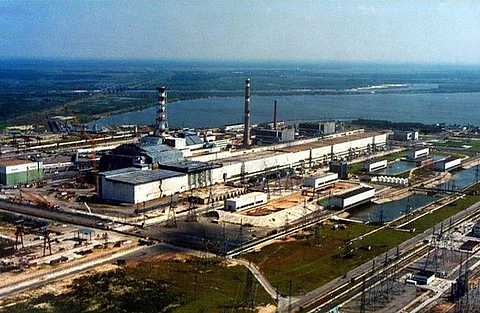
- Home
- न्यूजग्राम
- NewsGram USA
- India
- World
- Politics
- Entertainment
- Culture
- Lifestyle
- Economy
- Sports
- Sp. Coverage
- Misc.
- NewsGram Exclusive
- Jobs / Internships

BY- JAYA CHOUDHARY
The world's worst civilian nuclear disaster took place when a reactor exploded at the Chernobyl power plant in Ukraine, then part of the soviet union. Present-day Belarus received 60% of the initial fallout. The radioactive clouds continued to disperse through Europe, covering the majority of the continent. The Chernobyl nuclear power plant was one of the most modern facilities in the Soviet Union. The first two reactors were put into operation in the late 1970s, with the fourth reactor coming online in 1983.
Prior to the tragedy, the population of the area was estimated to be about 14,000 inhabitants and the area was the site of Ukraine's first nuclear power plant. While the town still has a population of about 690 residents, it has become more of a ghost town, with animals occupying many of the empty houses. The number of deaths directly linked to the original blast is estimated to be about 31, although the WHO claimed that a total of 4000 deaths can be traced to radiation poisoning due to the huge exposure.
This is how it went down, according to the World Nuclear Association.
Staff at Chernobyl reactor 4 were testing if the turbines could supply enough energy to keep the coolant pumps working in the event of a power outage, and whether they could do so before the diesel generator kicked in. They had attempted this test before, but it had failed. They reduced the reactor's output to 25% of its maximum capacity, but a concern emerged when the power dropped to 1%. They then attempted to raise the capacity, but a huge power surge resulted. The emergency restart of the reactor was unsuccessful.
As hot fuel met cold water, a mass of steam formed that couldn't escape, causing a lot of pressure. Wikimedia commons
One engineer tried to stop the drill, but a higher-up ordered him to keep on. The reactor got even more unreliable after that. According to one step-by-step analysis, the 1.5-tonne blocks atop the fuel channels of the upper biological shield started jumping up and down, and one engineer felt the shock through the building system. The pumps eventually failed, no water flowed, and the reactor began to make noises.
As hot fuel met cold water, a mass of steam formed that couldn't escape, causing a lot of pressure. The radiation leak began as this pressure removed a 1000 tonne lid. A graphite fire resulted from air entering the reactor. A second blast occurred after hot steam collided with zirconium, forming hydrogen. This blast was even larger than the first, and it threw rubble all over the place.
The Soviet Union finally created a 19-mile buffer zone around the reactor, forcing 3,35,000 residents to flee their homes. Wikimedia commons
As a result of the burning of gasoline, fires erupted all over the place, and radiation was released into the atmosphere. Thousands of tonnes of sand, boron, and dolomite were then dumped on the burning reactor by helicopter for days, not only to put out the fuel but also to attempt to avoid the transmission of radiation.
For ten days, a vast volume of toxic material was present in the air, the majority of which fell as dust into surrounding locations, but smaller fragments were carried far and wide by the wind. The Soviet Union finally created a 19-mile buffer zone around the reactor, forcing 3,35,000 residents to flee their homes.
Nonetheless, according to a UN survey, more than 6000 children and adolescents were diagnosed with thyroid cancer as a result of the incident. Furthermore, the tragedy is estimated to have cost 235 billion dollars in losses and polluted almost a fifth of modern Belarus' farm soil. Scientists predict that the region surrounding the plant would be uninhabitable for up to 20,000 years after more than 30 years. Even now, the exact scale of the tragedy is unknown, as it is still being investigated.
